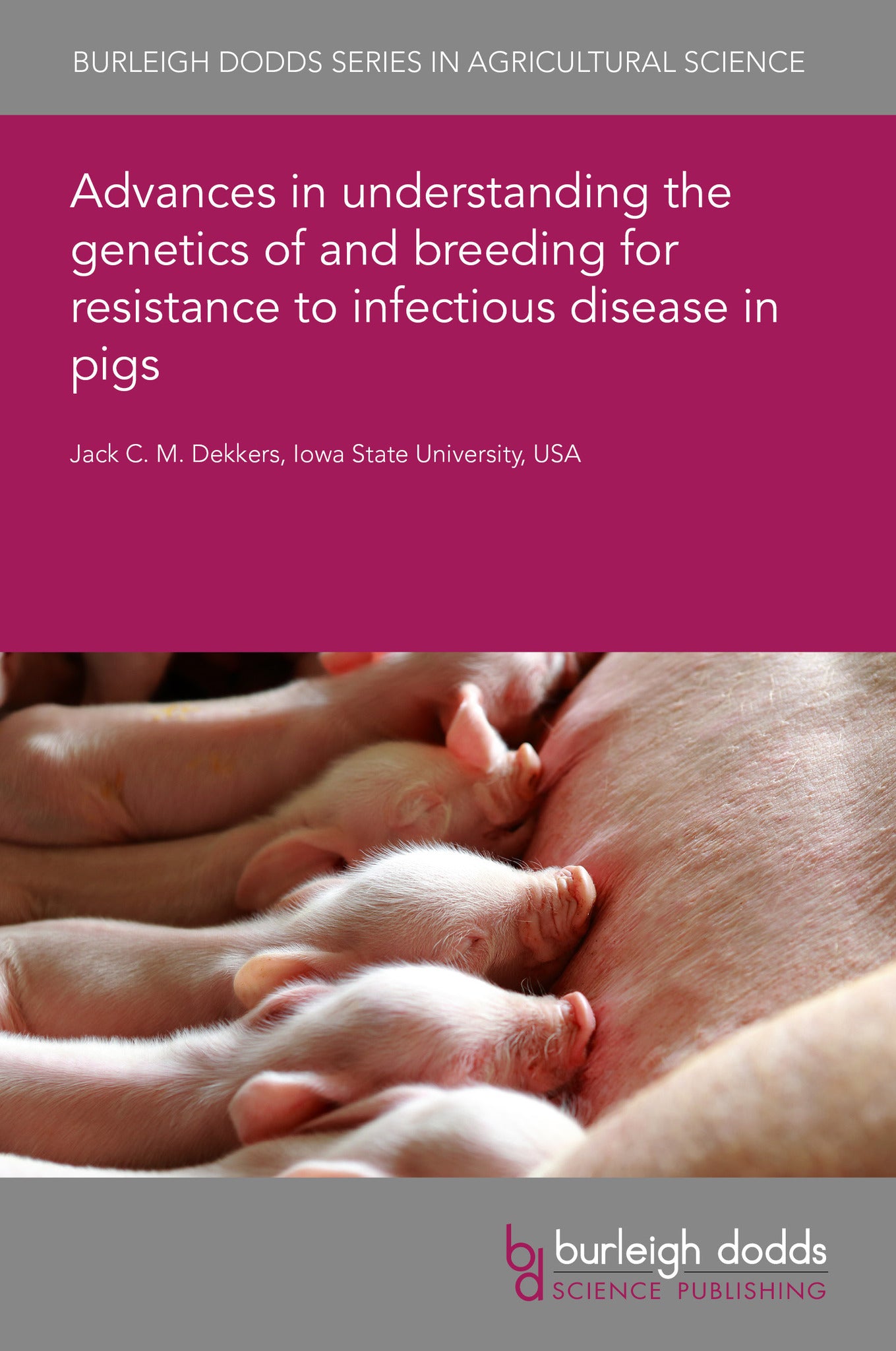We're sorry. An error has occurred
Please cancel or retry.
Advances in understanding the genetics of and breeding for resistance to infectious disease in pigs

Some error occured while loading the Quick View. Please close the Quick View and try reloading the page.
Couldn't load pickup availability
- Format:
-
07 May 2025

Pigs are exposed to numerous infectious disease pathogens, with large economic and welfare implications. How pigs respond to disease is in part determined by genetics. Thus, genetic improvement is one of the tools that can be used to mitigate the impact of disease, complementing biosecurity and vaccination. Although gene editing is a promising tool to create pigs that are resistant to specific pathogens, this is complicated by the multitude of pathogens that pigs are exposed to, their ability to evolve to escape resistance, and the threat of foreign pathogens. The purpose of this chapter is to review mechanisms of host defense to infectious pathogens, including the concepts of resistance, tolerance, resilience, and robustness, and strategies and challenges to use natural genetic variation to select pigs that are more resilient and robust, including the use of genomics and other -omics technologies.

TECHNOLOGY & ENGINEERING / Agriculture / Animal Husbandry, Animal breeding, TECHNOLOGY & ENGINEERING / Agriculture / Sustainable Agriculture, Sustainable agriculture

- 1 Introduction
- 2 Genetics of resistance to disease
- 3 Mechanisms to combat pathogens: resistance versus tolerance versus resilience or robustness
- 4 Immune competence
- 5 Pyramidal structure of pig breeding programs: opportunities and challenges
- 6 Phenotyping and other sources of information to estimate breeding values
- 7 Challenges to genetic improvement in pyramidal breeding programs
- 8 Phenotyping approaches for genetic improvement of disease resilience: collecting resilience-related phenotypes on animals outs
- 9 Phenotyping approaches for genetic improvement of disease resilience: collecting benign indicator traits of disease resilience
- 10 Conclusion
- 11 References



